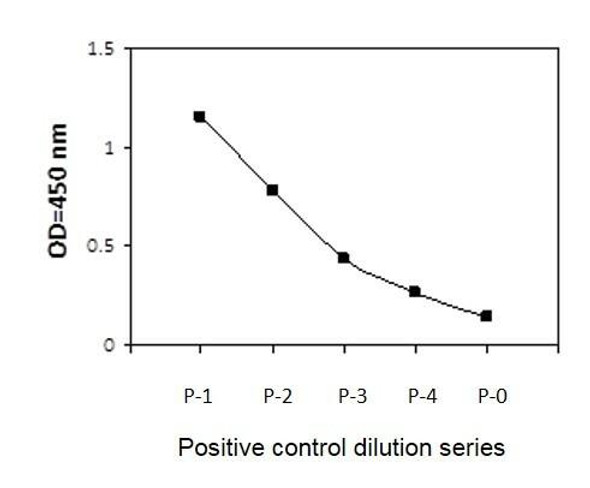Description
Anti-Phospho-ULK1-S638 Antibody (CABP1196)
The Anti-Phospho-ULK1 (S638) Antibody (CABP1196) is a valuable tool for researchers studying ULK1, a key regulator of autophagy involved in cellular homeostasis and response to stress. This polyclonal antibody, raised in rabbits, is highly specific for detecting phosphorylation of ULK1 at serine 638, a crucial post-translational modification that regulates its activity. Validated for use in Western blot applications, this antibody allows for the detection and analysis of phosphorylated ULK1 in various cell types and experimental conditions.
Its high reactivity with human samples makes it ideal for studies in cell biology, cancer research, and autophagy-related diseases.Understanding the role of Phospho-ULK1 (S638) in autophagy and cellular signaling pathways is essential for unraveling its implications in disease pathogenesis and identifying potential therapeutic targets. By utilizing this antibody, researchers can explore the intricate mechanisms of ULK1 regulation and its involvement in various cellular processes.
| Product Name: | Phospho-ULK1-S638 Rabbit pAb |
| Product Code: | CABP1196 |
| Size: | 50uL, 100uL |
| Synonyms: | ULK1, ATG1, ATG1A, UNC51, Unc51.1, hATG1, ULk1 |
| Applications: | WB |
| Reactivity: | Human, Mouse |
| Host Species: | Rabbit |
| Immunogen: | A synthetic phosphorylated peptide around S638 of human Phospho-ULK1-S638. |
| Applications: | WB |
| Recommended Dilutions: | WB 1:500 - 1:2000 |
| Reactivity: | Human, Mouse |
| Positive Samples: | 293T |
| Immunogen: | A synthetic phosphorylated peptide around S638 of human Phospho-ULK1-S638. |
| Purification Method: | Affinity purification |
| Storage: | Store at -20°C. Avoid freeze / thaw cycles. Buffer: PBS with 0.02% sodium azide, 50% glycerol, pH7.3. |
| Isotype: | IgG |
| Sequence: | Email for sequence |
| Gene ID: | 8408 |
| Uniprot: | O75385 |
| Cellular Location: | Cytoplasm, Preautophagosomal structure, cytosol |
| Calculated MW: | 150kDa |
| Observed MW: | 150KDa |
| UniProt Protein Function: | ULK1: Serine/threonine-protein kinase involved in autophagy in response to starvation. Acts upstream of phosphatidylinositol 3- kinase PIK3C3 to regulate the formation of autophagophores, the precursors of autophagosomes. Part of regulatory feedback loops in autophagy: acts both as a downstream effector and negative regulator of mammalian target of rapamycin complex 1 (mTORC1) via interaction with RPTOR. Activated via phosphorylation by AMPK and also acts as a regulator of AMPK by mediating phosphorylation of AMPK subunits PRKAA1, PRKAB2 and PRKAG1, leading to negatively regulate AMPK activity. May phosphorylate ATG13/KIAA0652 and RPTOR; however such data need additional evidences. Plays a role early in neuronal differentiation and is required for granule cell axon formation. Interacts with GABARAP and GABARAPL2. Interacts (via C- terminus) with ATG13/KIAA0652. Part of a complex consisting of ATG13/KIAA0652, ULK1 and RB1CC1. Associates with the mammalian target of rapamycin complex 1 (mTORC1) through an interaction with RPTOR; the association depends on nutrient conditions and is reduced during starvation. Ubiquitously expressed. Detected in the following adult tissues: skeletal muscle, heart, pancreas, brain, placenta, liver, kidney, and lung. Belongs to the protein kinase superfamily. Ser/Thr protein kinase family. APG1/unc-51/ULK1 subfamily. |
| UniProt Protein Details: | Protein type:Protein kinase, Other; Autophagy; Kinase, protein; Protein kinase, Ser/Thr (non-receptor); EC 2.7.11.1; Other group; ULK family Chromosomal Location of Human Ortholog: 12q24.3 Cellular Component: autophagic vacuole; cytosol; pre-autophagosomal structure membrane Molecular Function:protein binding; protein complex binding; protein serine/threonine kinase activity; Rab GTPase binding Biological Process: axon extension; cellular response to nutrient levels; macroautophagy; negative regulation of protein complex assembly; neurite development; peptidyl-serine phosphorylation; positive regulation of autophagy; positive regulation of macroautophagy; protein amino acid autophosphorylation; protein localization; regulation of autophagy; response to starvation |
| UniProt Code: | O75385 |
| NCBI GenInfo Identifier: | 317373288 |
| NCBI Gene ID: | 8408 |
| NCBI Accession: | O75385.2 |
| UniProt Secondary Accession: | O75385,Q9UQ28, |
| UniProt Related Accession: | O75385 |
| Molecular Weight: | 112,631 Da |
| NCBI Full Name: | Serine/threonine-protein kinase ULK1 |
| NCBI Synonym Full Names: | unc-51 like autophagy activating kinase 1 |
| NCBI Official Symbol: | ULK1 |
| NCBI Official Synonym Symbols: | ATG1; ATG1A; UNC51; hATG1; Unc51.1 |
| NCBI Protein Information: | serine/threonine-protein kinase ULK1 |
| UniProt Protein Name: | Serine/threonine-protein kinase ULK1 |
| UniProt Synonym Protein Names: | Autophagy-related protein 1 homolog; ATG1; hATG1; Unc-51-like kinase 1 |
| Protein Family: | Serine/threonine-protein kinase |
| UniProt Gene Name: | ULK1 |
| UniProt Entry Name: | ULK1_HUMAN |












